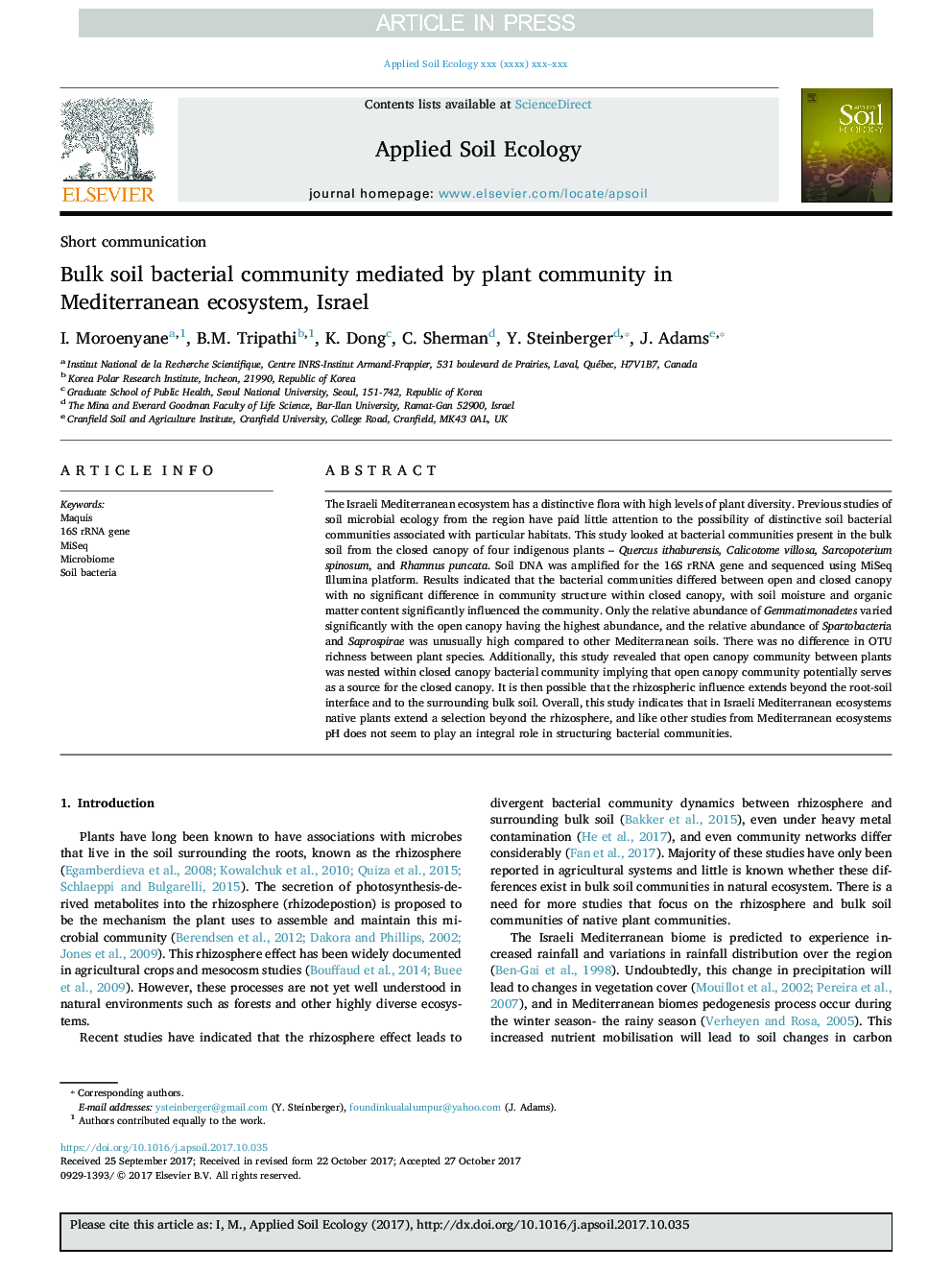| Article ID | Journal | Published Year | Pages | File Type |
|---|---|---|---|---|
| 8846766 | Applied Soil Ecology | 2018 | 6 Pages |
Abstract
The Israeli Mediterranean ecosystem has a distinctive flora with high levels of plant diversity. Previous studies of soil microbial ecology from the region have paid little attention to the possibility of distinctive soil bacterial communities associated with particular habitats. This study looked at bacterial communities present in the bulk soil from the closed canopy of four indigenous plants - Quercus ithaburensis, Calicotome villosa, Sarcopoterium spinosum, and Rhamnus puncata. Soil DNA was amplified for the 16S rRNA gene and sequenced using MiSeq Illumina platform. Results indicated that the bacterial communities differed between open and closed canopy with no significant difference in community structure within closed canopy, with soil moisture and organic matter content significantly influenced the community. Only the relative abundance of Gemmatimonadetes varied significantly with the open canopy having the highest abundance, and the relative abundance of Spartobacteria and Saprospirae was unusually high compared to other Mediterranean soils. There was no difference in OTU richness between plant species. Additionally, this study revealed that open canopy community between plants was nested within closed canopy bacterial community implying that open canopy community potentially serves as a source for the closed canopy. It is then possible that the rhizospheric influence extends beyond the root-soil interface and to the surrounding bulk soil. Overall, this study indicates that in Israeli Mediterranean ecosystems native plants extend a selection beyond the rhizosphere, and like other studies from Mediterranean ecosystems pH does not seem to play an integral role in structuring bacterial communities.
Related Topics
Life Sciences
Agricultural and Biological Sciences
Ecology, Evolution, Behavior and Systematics
Authors
I. Moroenyane, B.M. Tripathi, K. Dong, C. Sherman, Y. Steinberger, J. Adams,
